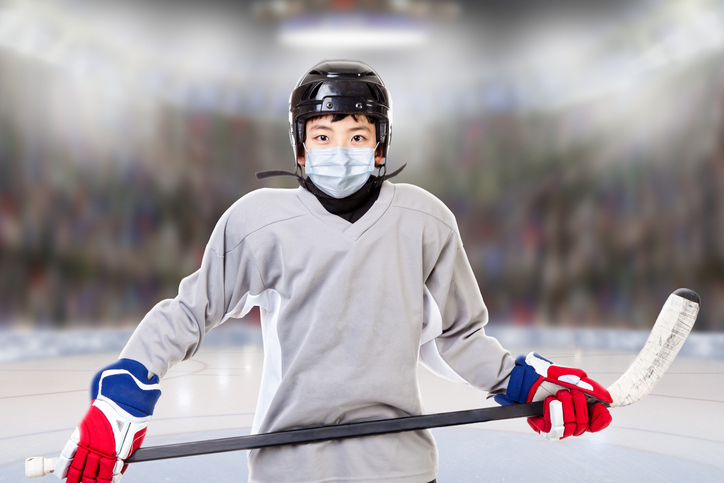
It’s become clear that the COVID-19 pandemic isn’t going to end anytime soon. This means that we are going to have to figure out how to live, and raise our children, when seemingly every action we take carries some risk.
Youth sports can bring great benefits to children. Team sports offer opportunities for exercise, which is crucial for health, and also for socialization and learning how to be part of a community. Children need these opportunities, which are particularly lacking during the pandemic. It would be great if we could find a way for children to engage in sports during the pandemic. But as with every trip to the store or even the mailbox, there are risks involved.
To help parents understand and navigate these risks, the Centers for Disease Control and Prevention (CDC) has released some information and considerations about youth sports during COVID-19.
First, which sport?
The first thing for parents to think about is the sport itself. Some sports are just more risky than others. Questions to consider include:
- Does the sport require that people be close to each other? Think about wrestling vs. baseball.
- Is there a lot of shared equipment and/or gear? The less gear, obviously, the better.
- What about the players who aren’t playing? For example, while social distancing is relatively easy for swimmers during a race, they are often packed together on a pool deck between races.
Other considerations when thinking about a sport or team include:
- The age and maturity of the players: Can they realistically be trusted to follow all safety rules?
- The size of the team: Big teams are harder to manage and keep safe. Smaller groups, especially cohorts of children that stay the same (as opposed to mixing it up), are best.
- The coaching staff: Are there enough to manage the team, but not so many to create more risk? Are they educated about COVID-19, and do they have support for getting and doing what is needed to keep players safe?
- The nonplayers: Spectators, volunteers and other people increase the risk. How is the team/league managing this?
- The physical setup for practices and competitions: Do they maximize social distancing whenever possible? This also includes start and end times, which should be staggered so that people have time to leave before new people arrive.
- Is there a plan/policy to manage possible exposures? This should be in place before anything starts, and everyone should be aware of it.
- Travel competition plans: This is particularly an issue if one team is from an area with more cases of COVID-19. Local competition is likely better.
- Are there at-risk players on the team, such as children with health problems? This could change everything about the risks a team can safely take.
Lowering risk, but not erasing it
The only way to have zero risk of catching or spreading COVID-19 from youth sports is not to play them. Some families will likely end up making that choice, such as families with vulnerable children or other vulnerable people living with them, or families whose living or work situations put them at ongoing risk of catching the illness, which could end up spreading it to the team. For these families, it will be just one of the many difficult and sad decisions they have to make during this crisis.
For those who decide to give it a try, after thinking carefully about the sport and team, there are ways to decrease risk. They include:
- Staying home if you are sick or have a known or possible exposure. This cannot be said often or clearly enough. We have a great responsibility to each other right now. There is no practice or competition worth risking someone else’s health or life. Check with your doctor or local health department as to when it would be safe to return.
- Frequent hand washing. Hand sanitizer should be readily available at practices and competitions, and everyone should use it all the time.
- Wearing a mask. I know it can be hard to wear one during vigorous exercise, but it can literally save lives. Do some experimenting to find the mask that works best, and remember that it needs to cover both the nose and mouth. Masks are most important when social distancing isn’t possible; if players need to take theirs off briefly, they should get more than six feet away from anyone.
- Be outdoors as much as possible. This works better for some sports than others, obviously.
- Wipe down any shared equipment or surfaces frequently. Cleaning supplies should be as available as hand sanitizer, and should be used just as often.
Finally, as much as players and spectators may want to shout encouragement, it’s best to keep quiet, as shouting can propel the virus further.
Team sports won’t be the same, of course — and for many children and families this will be very disappointing. But if we can find a way to do something, to be active and be together, it could help us get through this extraordinary, scary, terrible time.
Follow me on Twitter @drClaire
